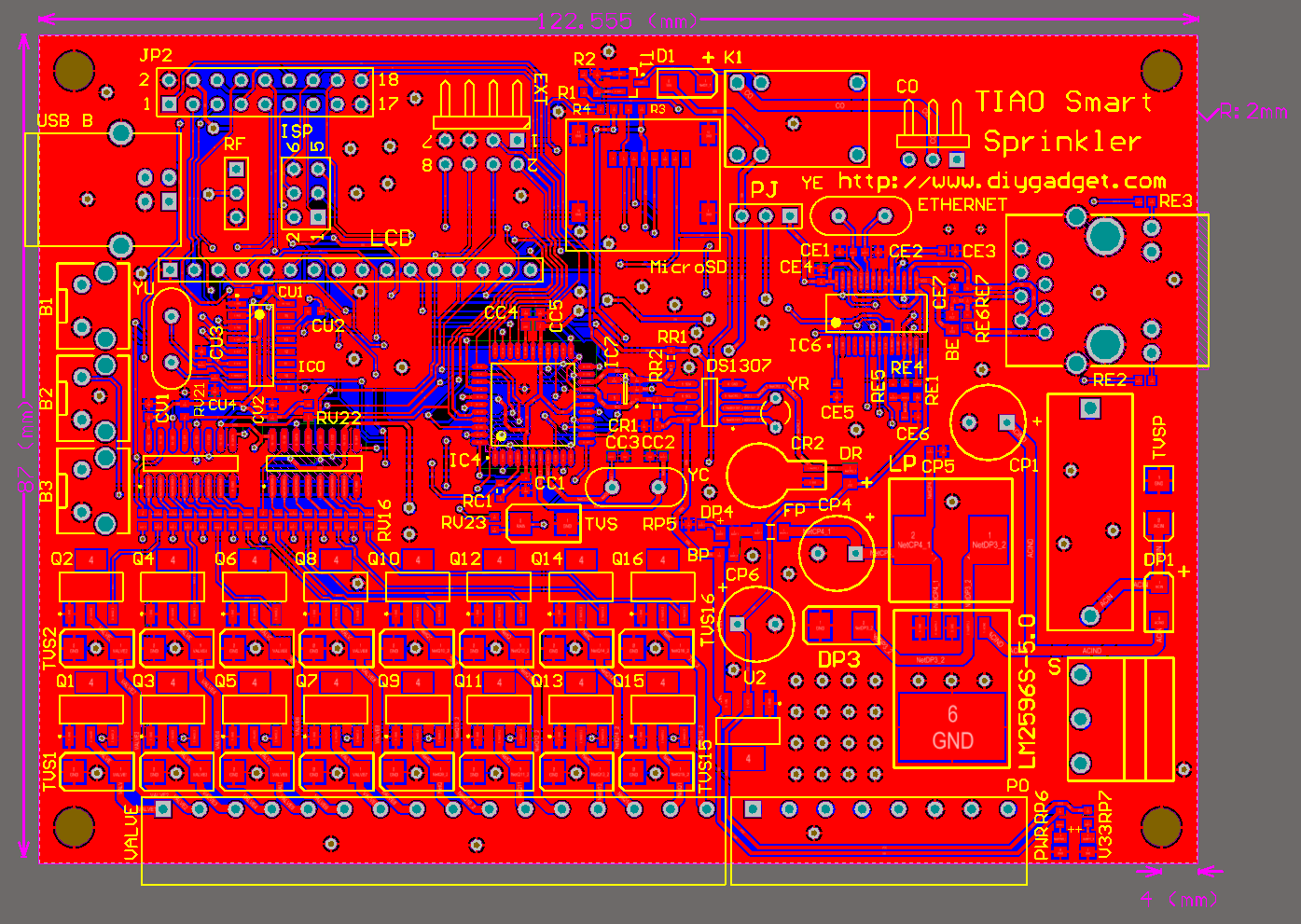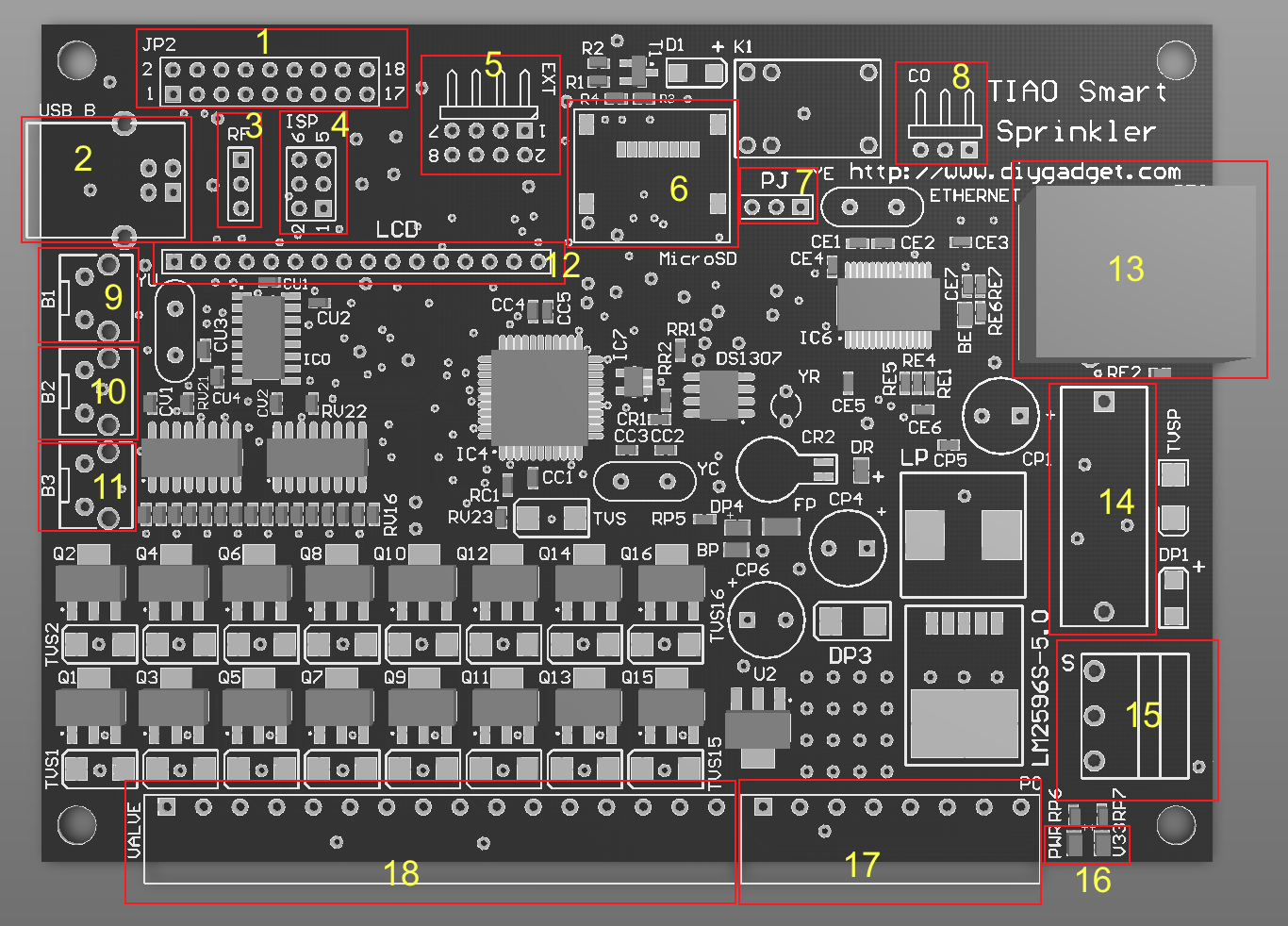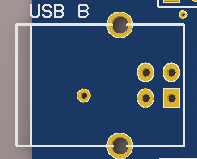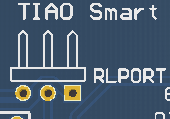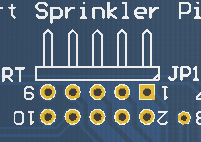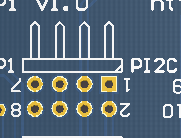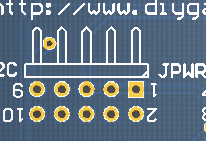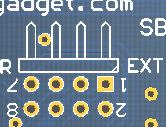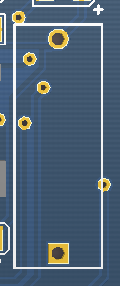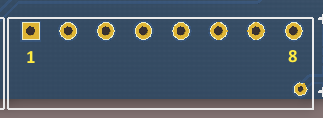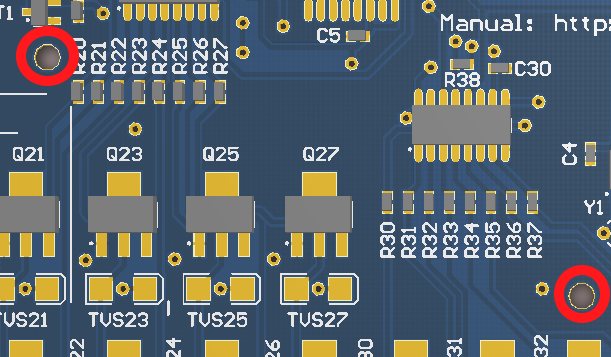TIAO Smart Network Sprinkler Controller Hardware Layout

10 PCS, 10cm x 10cm, 2 layers prototype for $38.80 shipped!
Contents
- 1 TIAO Smart Network Sprinkler Controller
- 1.1 TSS Hardware Dimensions
- 1.2 TSS Connector Layouts
- 1.2.1 Pin Out
- 1.2.2 USB B
- 1.2.3 RF Header
- 1.2.4 ISP header
- 1.2.5 Relay header
- 1.2.6 Analog header
- 1.2.7 I2C header 1
- 1.2.8 Power header
- 1.2.9 Expansion header
- 1.2.10 Hardware button
- 1.2.11 I2C header 2
- 1.2.12 Raspberry Pi female header
- 1.2.13 Fuse holder
- 1.2.14 Status LEDs
- 1.2.15 24V AC and rain sensor header
- 1.2.16 Station 1-16 header
- 1.2.17 Raspberry mounting holes
TIAO Smart Network Sprinkler Controller
For system connection diagram, please refer to TIAO Smart Network Sprinkler Controller System Connection Diagram.
The TIAO Smart Network Sprinkler Controller (TSS) is a piece of hardware controls your irrigation systems. It replaces your traditional sprinkler controller. TSS has many benefits over the traditional sprinkler controller:
- Web interface - program the watering schedule using your PC or mobile phone
- Supports complicate watering schedules
- Unlimited watering schedules
- Allow seasonal adjustments
- Weather API access - automatically adjust watering amount/time by checking online weather forecast (rain/wind etc)
- Control your sprinkler stations from anywhere in the world
- Software supports unlimited stations
- Total of 16 stations (or 1 master station + 15 stations), can expend to unlimited stations using our extension board
- Software supports unlimited stations
- Supports rain sensor
- Open source software - which means you can add your own function to the controller!
- System ON/OFF hardware switch
- Status LEDs (5V and 3.3v power)
- Status LCD - displays system status etc
- Low cost! It's cheaper than the traditional sprinkler controller!
TSS Hardware Dimensions
The board dimension of TSS is 122.5 x 87mm, or 48.2 x 34.2 inch. It also has 4 mounting holes, the radius of the mounting hole is 2mm:
TSS Connector Layouts
The following picture shows the connector layout of the TSS. You plug the LCD module directly on top of TSS without using any wires.
- Pin Out - for testing purpose
- USB B - for updating firmware
- RF Header - Radio Frequency (RF) transmitter Header
- ISP header
- Relay header
- Analog input and output (connect to onboard PCF8591
- I2C pins connect to Raspberry Pi's I2C pins
- DC power header (output)
- To connect to expansion boards
- To start or stop the schedule
- I2C pins connect to Raspberry Pi's I2C pins
- Female header so you can mount Raspberry Pi directly on top of TSSPi
- Holds the 2A fuse
- Status LEDs
- AC In, Common wire and rain sensor connector
- Connect to each individual valve
- To mount Raspberry Pi and TSSPi
Pin Out
| Pin # | Description |
|---|---|
| 1 | SDA |
| 2 | GND |
| 3 | SCL |
| 4 | V5 |
| 5 | ADC5 |
| 6 | V3.3 |
| 7 | ADC7 |
| 8 | ADC6 |
| 9 | TXD |
| 10 | RXD |
| 11 | SCK |
| 12 | PD2 |
| 13 | MISO |
| 14 | MOSI |
| 15 | V3.3 |
| 16 | AIN0 |
| 17 | GND |
| 18 | PD7 |
USB B
Connect this USB port to PC or laptop (USB A male to USB B female) to update TSS firmware.
RF Header
| Pin # | Description |
|---|---|
| 1 | A3 - Data |
| 2 | VIN - 5V |
| 3 | GND |
Radio Frequency (RF) transmitter header. Works with standard 434MHz or 315MHz RF transmitter.
ISP header
| Pin # | Description |
|---|---|
| 1 | MISO |
| 2 | VIN - 5V |
| 3 | SCK |
| 4 | MOSI |
| 5 | RESET |
| 6 | GND |
Relay header
| Pin # | Description |
|---|---|
| 1 | NC - Normally closed pin |
| 2 | CO - Change over pin |
| 3 | NO - Normally open pin |
The relay is rated as 120V/2A, however for safety concerns, please connect anything higher than 36V/2A.
Analog header
The TSSPi has on board PCF8591 8 bit AD/DA converter. The JP1 header on the board maps to the pins on PCF8591.
| Pin # | PCF8591 Pin | Description |
|---|---|---|
| 1 | AIN0 (1) | Analog input 0 |
| 2 | NC | 5V |
| 3 | AIN1 (2) | Analog input 1 |
| 4 | A0 (5), A1 (6), A2 (7), VSS (8), AGND (13), EXT (12) | GND |
| 5 | AIN2 (3) | Analog input 2 |
| 6 | VDD (16) | Vcc |
| 7 | AIN3 (4) | Analog input 3 |
| 8 | VDD (16) | Vcc |
| 9 | AOUT (15) | Analog output |
| 10 | A0 (5), A1 (6), A2 (7), VSS (8), AGND (13), EXT (12) | GND |
I2C header 1
PI2C heard connects to Raspberry Pi's I2C pins:
| Pin # | Description |
|---|---|
| 1, 2 | Vcc |
| 3, 4 | SDA |
| 5, 6 | SCL |
| 7, 8 | GND |
Power header
| Pin # | Description |
|---|---|
| 1, 3, 5 | Vcc |
| 7, 9 | 5V |
| 2, 4, 6, 8, 10 | GND |
Expansion header
| Pin # | Description |
|---|---|
| 1 | OE |
| 2, 4 | GND |
| 3 | STCP |
| 5 | SHCP |
| 6 | 24V AC |
| 8 | Vcc |
Hardware button
TSSPi has an onboard reset button, this button is connected to Raspberry Pi's GPIO24 (pin 18). A pull up resistor was installed, thus the GPIO24 is high when the button is not pressed, and it become low when the button is pressed.
I2C header 2
PI2C heard connects to Raspberry Pi's I2C pins:
| Pin # | Description |
|---|---|
| 1 | Vcc |
| 2 | SDA |
| 3 | SCL |
| 4 | GND |
Raspberry Pi female header
The female header, which allows you to put the raspberry pi directly on top of TSSPi without using any wires.
| Pin # | Raspberry Pi pin # |
|---|---|
| 1 | 17 |
| 2 | 18 |
| 3 | 15 |
| 4 | 16 |
| 5 | 13 |
| 6 | 14 |
| 7 | 11 |
| 8 | 12 |
| 9 | 9 |
| 10 | 10 |
| 11 | 7 |
| 12 | 8 |
| 13 | 5 |
| 14 | 6 |
| 15 | 3 |
| 16 | 4 |
| 17 | 1 |
| 18 | 2 |
Fuse holder
The onboard fuse hold. The fuse is rated at 2A.
Status LEDs
Led indicators.
| LED | Description |
|---|---|
| S1 | Connected to Raspberry Pin 12 (GPIO18), TIAO Smart Sprinkler Pi Controller Software uses this pin to indicate the controller has active schedule in queue. Other controller software may not use this LED. |
| S2 | Connected to Raspberry Pin 16 (GPIO23), TIAO Smart Sprinkler Pi Controller Software uses this pin to indicate the active schedule is running. Other controller software may not use this LED. |
| PWR | ON when TSSPi is connected to 24V AC |
| Pi | ON when Raspberry Pi is connected to TSSPi |
24V AC and rain sensor header
This header allows you to connect the power (24V, 2A AC) to the TSSPi. This is the only power source needed for the controller. Raspberry Pi draw power from TSSPi since TSSPi has onboard AC-DC converter. For power, connect one of the 24V AC 2A transformer's terminal to pin 8 (24V AC In) and the other terminal to pin 7 (GND) For rain sensor, connect one of the rain sensor's terminal to pin 5 (Rain sensor terminal) and the other terminal to pin 6. The rain sensor is optional.
| Pin | Description |
|---|---|
| 1, 2, 3, 4 | Common wire, connect to sprinkler valve's common terminals. |
| 5 | Rain sensor terminal |
| 6, 7 | GND |
| 8 | 24V AC In |
Station 1-16 header
TSSPi can control 16 stations (including master station if you have one) without expansion board. This header has 16 connectors, so you can connect up to 16 valves.
- Example 1: My irrigation system has 10 stations, I do not have a master station.
- Connect RED wires of the valves to 'Common wire' connectors (see #24V AC and rain sensor header), then connect BLACK wires of the valves to connector 1 to 10 respectively.
- Example 2: My irrigation system has 15 stations, I have a master station.
- Connect RED wires of the valves to 'Common wire' connectors (see #24V AC and rain sensor header), then connect BLACK wire of the the master valve to connector 16, and other BLACK wires of regular valves to connector 1 to 15 respectively.
Raspberry mounting holes
Raspberry pi mounting holes. TSSPi comes with screws and posts, so you can mount the raspberry pi on TSSPi.

10 PCS, 10cm x 10cm, 2 layers prototype for $38.80 shipped!
